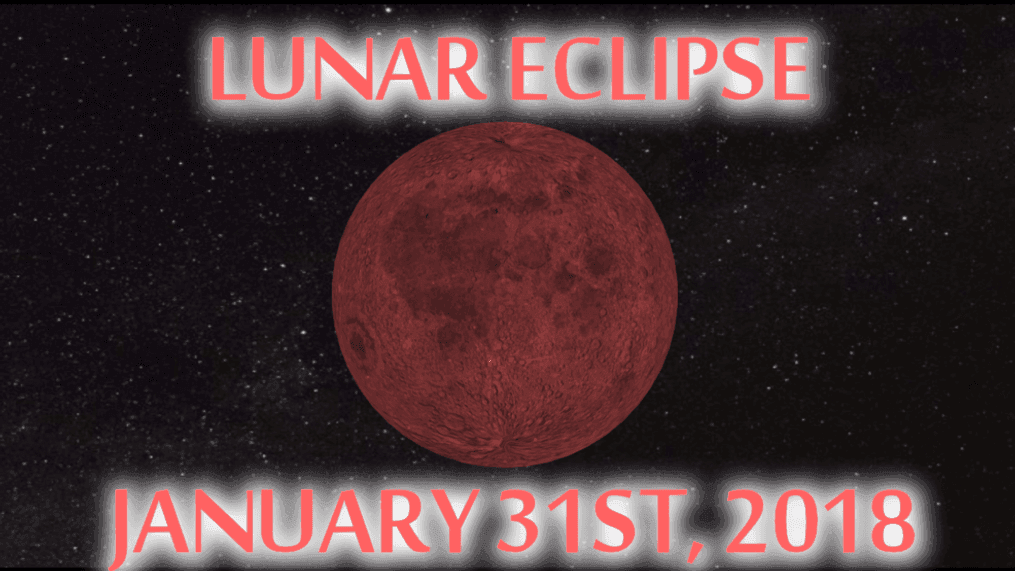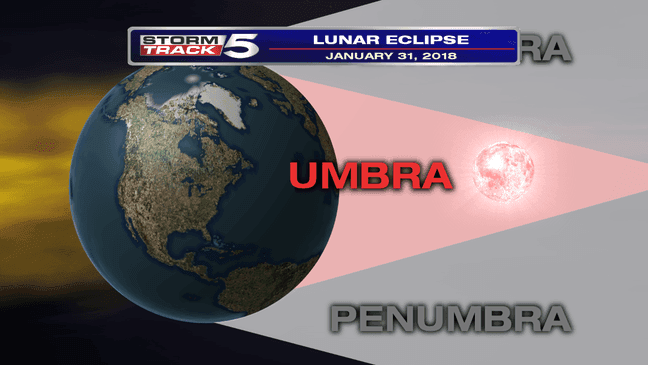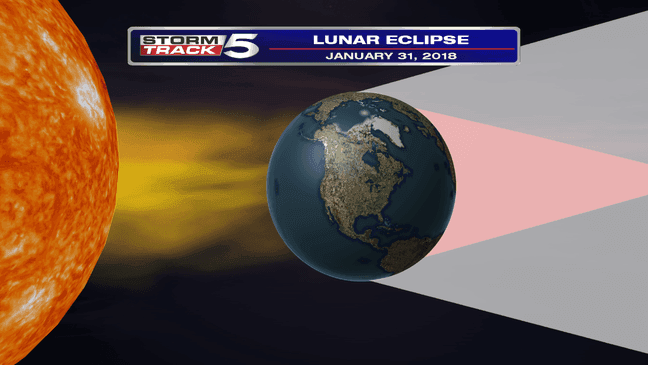January ends with a total lunar eclipse; will we see it?
This past summer, the country was all excited over the total solar eclipse. Although more common than a solar eclipse, January finishes with a total lunar eclipse.
In a lunar eclipse, the earth is directly in between the sun and the moon. This causes the earth to cast a shadow on the moon.
The less pronounced, outer region of this shadow is called the penumbra. The moon will be passing through this region at 5:51 a.m. on January 31st.
The really awesome part of any lunar eclipse is when the moon passes through the umbra. The umbra is the fully shadowed region. As the moon starts to move through the umbra, the partial lunar eclipse begins. This will happen at 6:48 a.m. on January 31st. We will be able to see that.
The total lunar eclipse occurs, once the moon is completely inside the umbra. Once this happens, the moon takes on a faint, red color. The sun, Earth, and the moon are aligned at this time. That happens at 7:52 a.m. on January 31st. That's the sad news of this all for us.
We won't get to see the full show. The sun rises at 7:31 a.m. that morning, and the moon officially sets just one minute later. Areas west of the Mississippi, therefore, will have the better chance of seeing the total lunar eclipse. On the map, those areas are shaded in a dim gray with a happy emoji. We, on the other hand, are unshaded with a sad emoji.
As for us, we'll have to wait until the night of January 20, 2019 to see the next total lunar eclipse.




